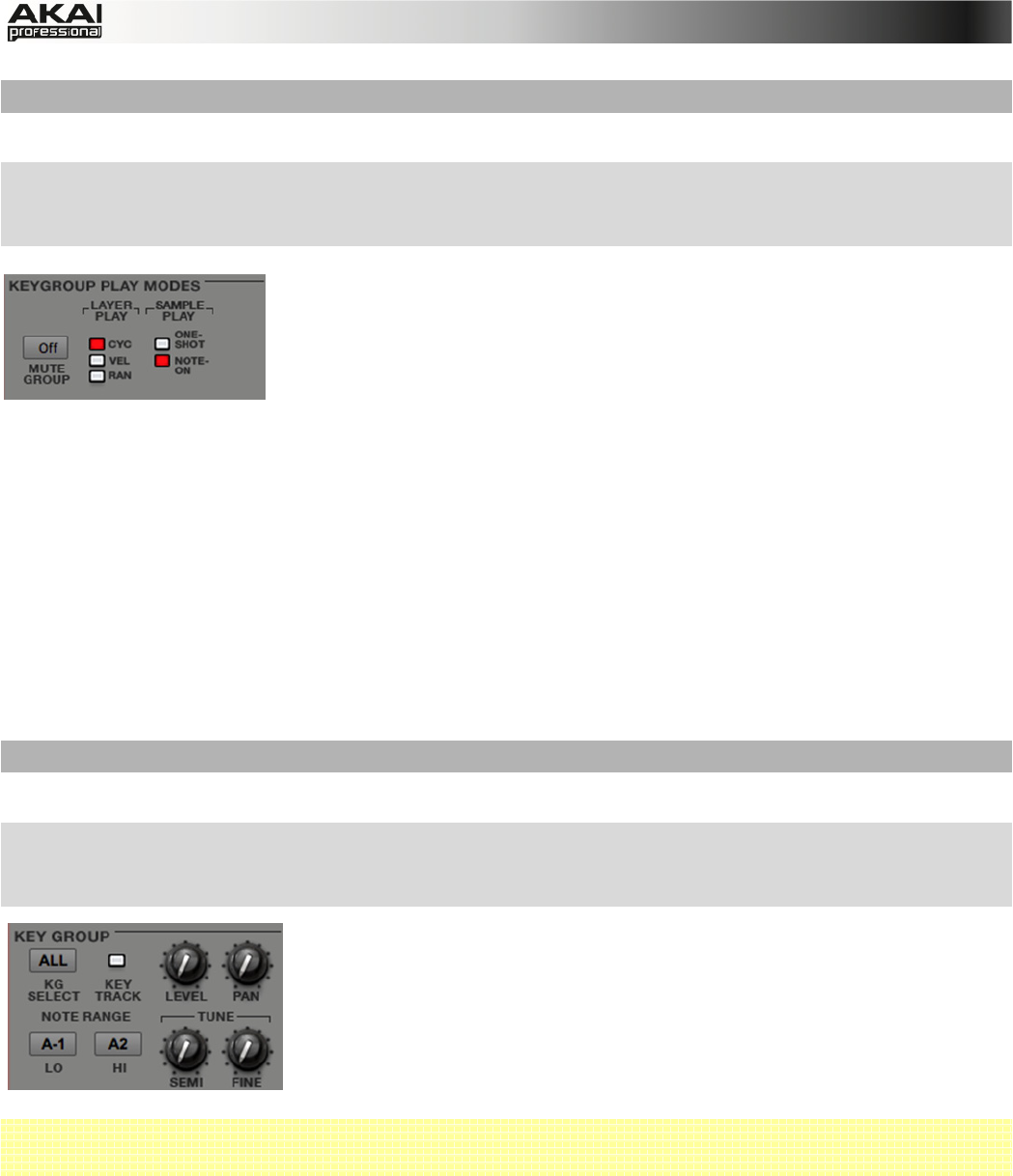
49
KEYGROUP PLAY MODES (Keygroup Programs only)
Here you can set the behavior for keygroup samples for each pad.
X To edit the KEYGROUP PLAY MODES parameters, press the F1 button (Master) on your
MPC hardware. Use Q-Link knobs Q9 – Q11 for direct access of all 3 parameters. Keep in
mind that these parameters are available only in KEYGROUP programs.
You can assign the selected pad to one of the 32 available MUTE
GROUPs. When pads assigned to the same mute group receive MIDI
notes, the last note played will mute any other sounding instrument of
that mute group.
With LAYER PLAY, you can determine how multiple samples
assigned to the same pad are played. Activate the Cycle (CYC)
function to play the next layer’s sample each time that pad is played. In other words, the samples
will cycle through the layers as follows: 1, 2, 3, 4, 1, 2, 3, 4… etc. Use Velocity (VEL) to switch
between samples depending on how hard you hit a pad. Finally, the Random (RAN) function will
allow all the samples assigned to the pad to be selected randomly. This way, every time you hit a
pad, one of the assigned samples will be randomly chosen to play.
With the SAMPLE PLAY function, you can determine whether the pad is played as ONE-SHOT
(from start to end) or defined by NOTE-ON (only as long as the note is held). Select ONE-SHOT
when you want to play short sounds. However, if you are using a long sample, it is sometimes
better to set it to NOTE-ON so you can control a sound’s duration by pressing and holding its
corresponding pad.
KEY GROUP (Keygroup Program only)
Here you can set additional parameters for KEYGROUP programs.
X To edit the KEY GROUP parameters, press the F1 button (Master) on your MPC hardware.
Use Q-Link knobs Q1 – Q8 for direct access of all parameters. Keep in mind that these
parameters are available only in KEYGROUP programs.
In a KEYGROUP program, you can also use the pads on your MPC
hardware to play samples assigned to keygroups. The 128 pads
(A01 to H16) correspond to MIDI notes from from note number 0 to
127, allowing you to easily play a melody with a single sample over
a wide range. How to setup a KEYGROUP program is described in
Chapter 5.0 on Page 31.
 Keep in mind that the root key of a loaded sample will determine where the original pitch is
located. If the root key, for example, is C3, the original sample is located at pad D13.
With KG SELECT (Keygroup Select), you can select a particular Keygroup for editing. This
parameter works in conjunction with the NO. KG (Numbers of Keygroups) parameter in the EDIT
LAYERS section, that lets you create up to 128 keygroups within one Keygroup program. A
default Keygroup program contains only one single Keygroup. When you have created more than
one Keygroup with NO. KG, you can use KG SELECT to select any Keygroup for editing. ALL
selects all available Keygroups of a Keygroup program for simultaneous editing.
KEYTRACK allows you to switch the automatic transposition of a sample on or off. If inactive, you
will always hear the same pitch of the sample, no matter which note is triggered by pads or a
connected MIDI keyboard.
LEVEL controls the overall volume level of the loaded sample(s).


















